Disappearing City: Traditional Market, Sai Ying Pun
Link to YouTube: https://youtu.be/obeGCBsi4KM
In Hong Kong, traditional markets, known as wet markets, are where fresh meat, produce, and other perishable goods are sold. In 1994, these markets accounted for 70% of produce sales and 50% of meat sales. Hong Kong’s first market, the Central Market, opened on May 16, 1842, in Queen’s Road Central, Hong Kong. After years of dereliction, the market reopened to the public on August 23, 2021, and has also been transformed into a new center with retail, dining, and public areas. It also demonstrates the gradual transformation and disappearance of traditional markets, which is the point I wanted to show in this post: the disappearing traditional market. In this video, I traveled to the main street of Sai Ying Pun and filmed traditional markets and supermarkets to explore the disappearance of traditional markets.
Description of the Video’s Theme and Subject
The location for this shoot was Sai Ying Pun’s Centre Street and Queen’s Road West.
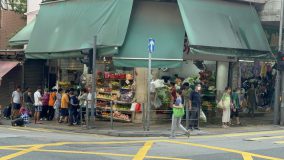
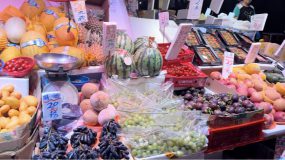
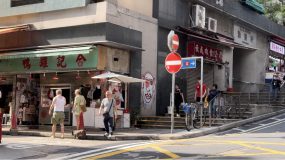
Figure1 Figure2 Figure3
Clips from video (vendors on the street)
On the street, you can see vendors selling fruits or vegetables and some selling clothes. When I was shooting, I found that most vendors would choose to open at the intersections or corners (Figure 1 & 3). I guess it’s because of the heavy flow of people and the fast pace of life in Hong Kong, so if you open a shop at an intersection, people can drop by and buy while waiting for the traffic light.

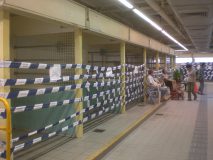
Sai Ying Pun Market, Wikipedia Centre Street Market, Wikipedia
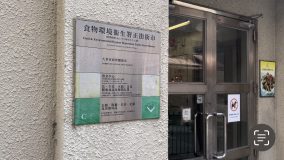
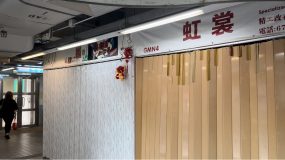
Figure4 Figure5
Clips from video (vendors in the wet market)
As can be seen in Figure 4, the Centre Street Market has three levels and is connected to the Sai Ying Pun Market. It sells various goods, but the faded signage shows how long it has existed. Figure 5 shows that many shops are no longer open, and many are subletting due to poor business.
These are vendors and wet markets, collectively known as traditional markets. Next, the video camera switches to supermarkets such as PARKnSHOP, Wellcome, etc.


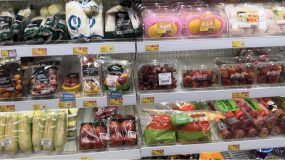
Figure6 Figure7 Figure8
Clips from video (supermarkets eg. Wellcome, PARKnSHOP, Japan Home Centre)
Supermarket shelves are available in a broader range of categories and the supermarkets are bigger. Moreover, during the filming process, I found out that the consumers of these supermarket chains are more foreigners or young people.
Method of Conducting Research and Producing the Video
For the video soundtrack, I kept the original soundtrack, especially the sound of the traffic lights, as this sound is the sound of Hong Kong. Among the other sounds, I maintained the sounds of Hong Kong locals speaking Cantonese and the din of the marketplace, as it is a good representation and composition of the traditional Hong Kong market.
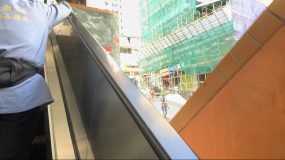
Figure9, Clip from video (moving escalator)
There are a lot of slopes in Sai Ying Pun, so there are many escalators. In the video, I used a lot of clips of standing on the escalators with the camera moving (eg. Figure 9). This shot was inspired by Dreamland, introduced in Workshop 2, a film by director Chen in which one of the camera transitions is swinging from side to side on an amusement ride.
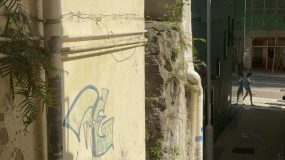
Figure10, Clip from video (scenery shot)
This is a scenery shot, and my compositional idea for the picture is to split the picture symmetrically into left and right parts based on light and dark. The light part of the left side shows graffiti and street art that emerged in the 1960s and 1970s, while the dark part of the right side shows new and under-construction buildings in modern style.
Findings & Conclusion
As I mentioned in previous paragraphs, traditional markets are fading away. There are many reasons for this, the first of which is the gradual improvement in people’s quality of life and the fact that Hong Kong, as an international financial center, has many reasons for its foreign population. Therefore, this group will prefer supermarkets, such as City Super, also found in foreign countries. Not only that but there are payment options. Like in Mainland China, mobile phone payments have become popular. Although improvements are also being made gradually in Hong Kong, most traditional markets only accept cash, not Octopus. This payment method is inconvenient for foreigners such as tourists, while tourism accounts for about five percent of Hong Kong’s GDP, one of the pillars of Hong Kong’s economy. As a result, the disappearance of traditional markets is inevitable.
Secondly, during the filming, we also found that more customers of these traditional markets are older people. Nowadays, more and more young people, such as international students, need more time to cook, and the price of takeaway platforms, such as Keeta, is getting more and more affordable. Hence, the disappearance of traditional markets is inevitable. In addition, as commuting between Hong Kong and mainland China becomes more and more convenient, many Hong Kong people travel north to Shenzhen every week to buy the following week’s necessities, which will put more competitive pressure on traditional markets.
However, the high cost of living in Hong Kong still requires cheaper shopping places like traditional markets. The government also gives consumer subsidies and has strict regulations on the environment of these places, so in the short term, the traditional market will still occupy a good proportion of the market.
Bibliography:
Wikipedia. Wet markets in Hong Kong https://w.wiki/A5ch
Wikipedia. 西营盘街市 https://w.wiki/A5cg
Wikipedia. 正街街市 https://w.wiki/A5d7
Wikipedia. PARKnSHOP https://w.wiki/A5dE
Wikipedia. Wellcome https://w.wiki/hGx
Wikipedia. 港人北上 https://zh.wikipedia.org/w/index.php?title=%E6%B8%AF%E4%BA%BA%E5%8C%97%E4%B8%8A&oldid=82079394
Workshop 2. Dreamland, dir. by Steve Chen, 2015.
https://www.fehd.gov.hk/tc_chi/pleasant_environment/tidy_market/Markets_CFC_list.html
XU YIHAN (UID: 3036102218)
This is a well-organized video, the author from different vantage points to show us the scenery of the old market in Sai Ying Pun. At the same time, the color tones and filters throughout the video are very unique, perhaps because of the low exposure and warm colors, giving people a warm feeling, very much in line with the visual impression of these old shops in Sai Ying Pun. At the same time, the author also gives a unique analysis of the significance of their existence, although in a fast-paced city like Hong Kong, most young people do not have time to patronize such stalls, but their existence also provides a different choice for the high price of life in Hong Kong.